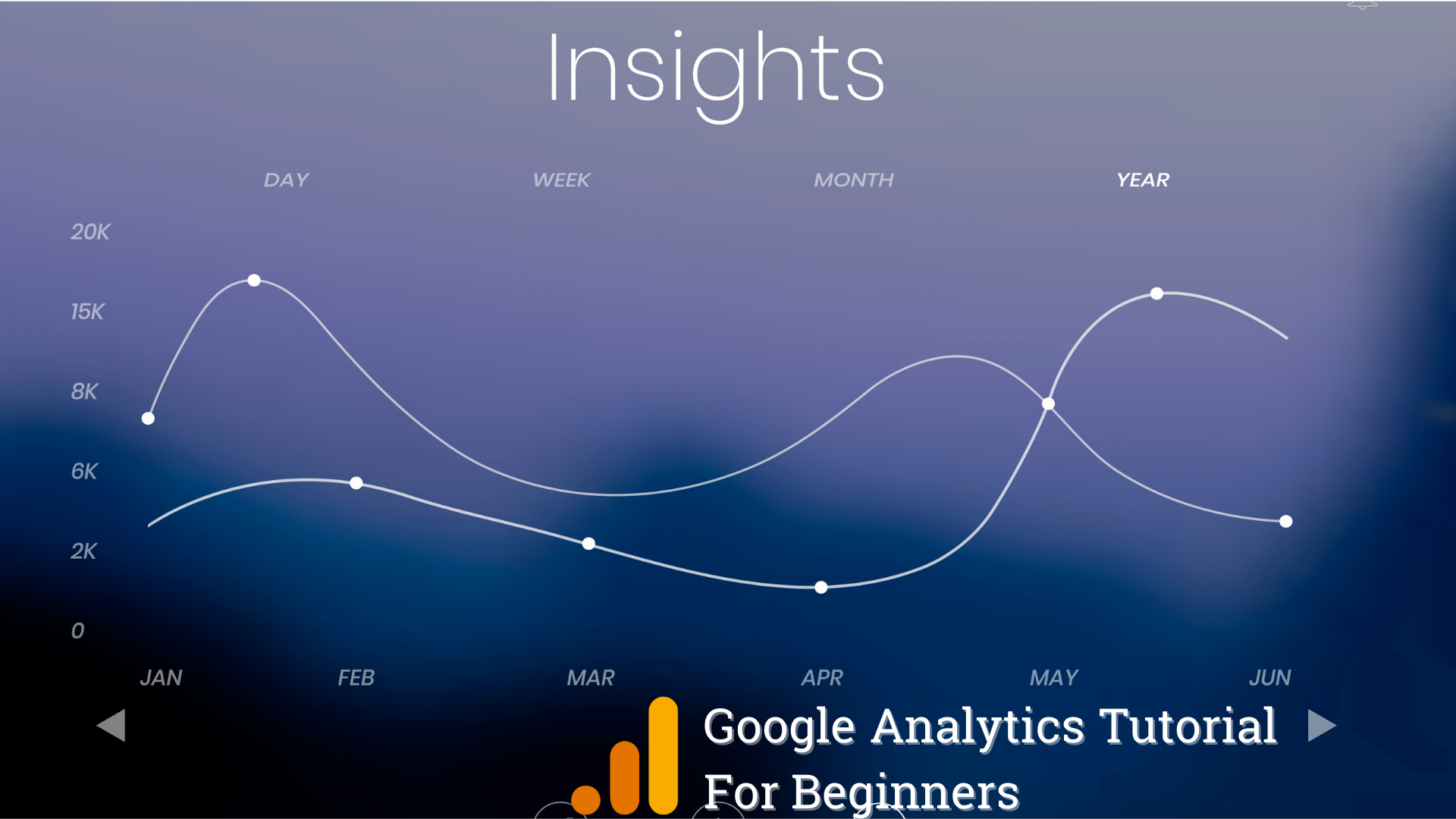Google Analytics Beginners tutorial 2025
Many people don’t know about what is google analytics and how to use it to promote their business online and derive profitable results. To know how visitors behave on your micro site is very important in the current world where everything is centered on data.
Google Analytics is a uniquely comprehensive tool that enables the web site owners and marketers to monitor and analyze the broad range of quantitative characteristics reflecting the users’ activity, origins and the overall web site efficiency.
Being a free and open-source tool, it provides valuable information to increase marketing efficiency, optimize the overall users’ experience, and generate better results for companies and organizations.

That being said, this article on Google analytics beginners tutorial is designed to make you understand the following subtopics regarding Google Analytics; what it is? Why it is relevant? How to use it?
What is Google Analytics?
There is Web traffic analysis service which is provided by Google namely Google Analytics. Originally started in 2005, it has grown to become probably the most popular analytics tool around today, which reveals information about almost everything from the amount of traffic your site gets, to the amount of certain activity on the site.
You only need to put a small piece of JavaScript code on your site and Google Analytics is capable of tracking a huge amount of information. It is clubbed into many reports which provide helpful information pertaining to users’ experience on your site, their origin, and efficiency of marketing campaigns.
Google Analytics Basic Facts
In other words, it has the potentials required to provide added info on top of Google Analytics. Some of its most important capabilities include:
1. Audience Insights
Google Analytics provides detailed demographic and geographic information about your visitors, such as:
•Location: Your users geographical source country: City:
•Demographics: It refers to the age of your targeted audience, gender preference and their interests.
•Devices: On which machines (Desktops, mobiles, or tablets) are the visitors coming to your site? Knowing who your audience is can assist in delivering targeted blog posts and properly adjusting all website elements to better suit the audience.
2. Acquisition Reports
This feature helps you understand how users arrive at your site, whether through:
•Organic Search: Web site visitors that come from Search Engine Services like Google.
•Direct Traffic: Visitors who enter the address of your website in the address bar directly.
•Referral Traffic: Users who arrive at the site from other sites on the Internet.
•Social Media: Any traffic coming directly from Facebook, Twitter or even Instagram for instance.
•Paid Campaigns: First time users or people referred to our site directly by any paid advertising platform such as Google Ad words, Face book ads, etc. Having the sources of your traffic identified makes it easier to work on resource expenditure and give the necessary focus on managing your marketing strategies so as to get the most out of your investment.
3. Behavior Reports
Behavior reports describe users’ activity after their first visit and help understand the site usage deeper. Some key metrics include:
•Page views: This is the over-all number of total pages that the users visited.
•Bounce Rate: The number of people who enter your site and, within one visit, navigate away to another site.
•Average Session Duration: What page of your site user spends more time on.
•Site Content: As for the concrete values, two questions are typically addressed: what pages or sections of it can attract the biggest traffic. Such data enable one to understand articles that are popular and those that have poor user experience.
4. Conversion Tracking
Google Analytics lets you track goals and conversions, such as:
•Form Submissions: The following are the goals of website analytics: Monitoring when users complete a contact form or sign up for a newsletter.
•Product Purchases: Using electronic commerce transactions in managing the customer purchase processes.
•Event Tracking: Clicks, views, or downloads – that people make on other people, videos, products, or the appliances of a given brand. Conversion tracking is helpful in determining the success rates of your marketing campaigns for you to tweak around and find the right way of converting more consumers.
5. Real-Time Data
Google Analytics give an instant detailed updating of the status of the website as it is used. This feature makes it possible to view the number of users currently on the site, the pages they are interested in and the sources that referred them at any point of time. This is respectively helpful for measuring the first imprints of new marketing campaigns or product releases.
Google Analytics helps to make better decisions about website. Google Analytics is still one of the most powerful tools for business in any kind of scale. Here’s why:
1. Informed Decision-Making
Google Analytics data enables the organization to know which of the strategies for marketing is effective and which one is not. For instance, if your website is driven from organic search then perhaps you should consider a more focused approach on SEO. However, if most of the site traffic is coming from social media, then targeting the paid social ads may be profitable.
2. Enhance User Experience
The technical features of the site show the problematic issues that the user faces and demonstrate the area of improvement. Sharing high bounce rate or low session length may suggest that some pages or content are not interesting enough . By addressing these issues you will be more likely to improve the user experience and make visitors spend more time and make them more engaged.
3. Optimize Marketing Campaigns
It is important as with Google Analytics it is possible to track the success of the launched campaigns. In paid ad campaigns, email marketing, social media promotions, or any other marketing route, evaluating the performance of each channel assists in creating a coherent plan for an optimal use of funds to target the most effective channels.
4. Track Conversions and ROI
Google Analytics is capable to provide detailed information concerning certain objectives but can also define trackable conversions with a perspective of business view from the first time when the customer interfaces with the website to the time he makes the final conversion. These are easy to understand for an organization, specially for calculating bottom-line ROI and about which strategic changes can be made constantly to assure maximum profitability.
5. Improve SEO Performance
While giving very detailed information, Google Analytics can show how a given website behaves in organic search results. Looking at which areas of your website receive the most hits, how these users move around your site, and where they abandon your site, allows you to better optimize your SEO to warrant a high placement and increased quality of hits.
How to setup Google Analytics
After having a comprehensive understanding of what is google analytics and how it is profitable to businesses, these steps will make you understand how to setup google analytics for your business and reap rich results. Let us understand that in detail
1. Setting up Google Analytics Account
In your browser type www.google.com/analytics and make an application for a free account. Google account will be required to start and watch the streams of these services.
2. Promote Your Website is part of our Add Tracking Code to Your Website process.
With an account set up, Google will generate a particular tracking code which has to be used. You have to place it in the header section so that all your site’s pages get tracked. Thanks for sharing these valuable tips, there are some plugins available in WordPress for adding the tracking code without digging too much with HTML.
3. Set Up Goals
Determine the kind of calls to action you wish to monitor; whether it is form submissions, purchases or the time spent on a certain webpage. Some of these goals can be set up in the Google Analytics control panel to track these primary conversions.
4. Explore the Dashboard
Google Analytics involves many kinds of predefined reports. Do not miss the chance to go through the several tabs: Audience, Acquisition, Behavior, and Conversions. These reports give you information about various elements that belong to your site.
5. Advanced Features: Segmentation and Filters
Once you get the nap of the bore you can always go back to the pro functions such as the custom segments to focus more on a particular group of your traffic such as the mobile users repeat visitors among others or filters to for instance omit your intranet traffic or spam referrals.
Conclusion
In the above article we have discussed what is google analytics and how imperative it has become to business owners in the current scenario. Google Analytics is perhaps one of the most valuable assets a user can have if he wants to render his website efficient or simply gather precise information about it.
Regardless whether you have a small blog or a huge online store, or you are creating a site for your company, Google Analytics will help to fine tune the focus on the materials that really interest the visitors or cones that increase the conversion. Here, as a newcomer, you may spend a few minutes to read and understand all the features it can offer to help you improve your Internet presence.
Also Read:
Popular Posts

AHREFS
Ahrefs is one of the main heavyweight software originally designed as a backlink analysis tool now provides variety of seo services to optimize sites

SEMRUSH
SEMrush is a software that enables the user to improve the overall performance and make changes to their marketing strategies to compete with rivals.

Digital Marketing
Digital marketing refers to a broad category of marketing strategies designed for the process of brand promotion, attracting visitors and traffic..

What is Google Adsense
What is Google Ad sense? A facility provided by Google that enables website owners
to show ads with similar niche on their websites and earn money

Search Engine Marketing
Search engine marketing is a technique of running paid ads to increase website ranking in SERPS. Paid ads rank higher easily than organic results.

